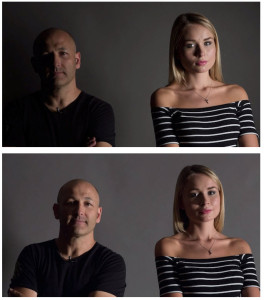I’ve always known and understood the Inverse Square of Light (in its simple form: when you change the distance between the light and the subject the intensity of light changes more then the ratio of the distance between the light and the subject. If you double the distance, the light falls off 2 stops-4 times.) but I’ve only thought of it in the sense of intensity of light on the object to get the exposure I wanted. In this video, Karl Taylor shows how to manage the distribution of light on multiple subjects using the Inverse Square rule.
In short – the closer the light is to the subjects, the faster the fall off. The further the light is from the subjects, the less the fall off (its more even over a wider area). So if you are lighting a group with a single light from the side, moving the light away from the group will equalize the distribution of light overall.
I like that.
It will also lessen the intensity of the light on the subjects, requiring an increase in power, or increase in exposure. Win one thing, give up another in exchange.
I’ve added this to the Training library.
